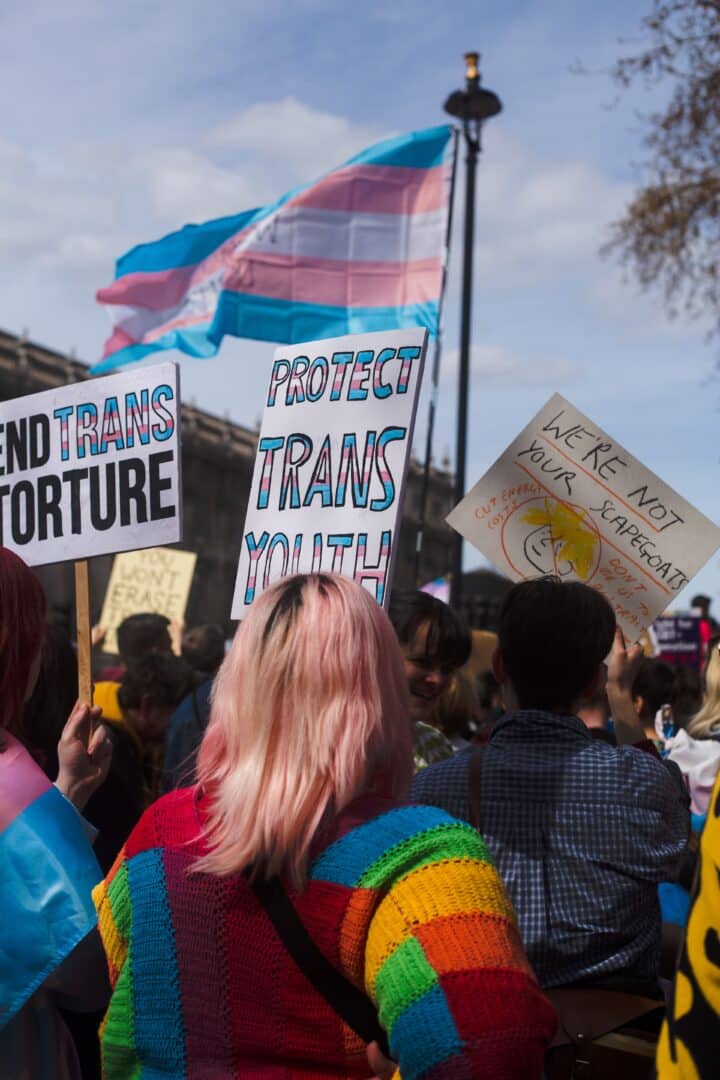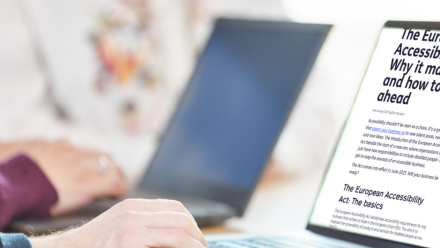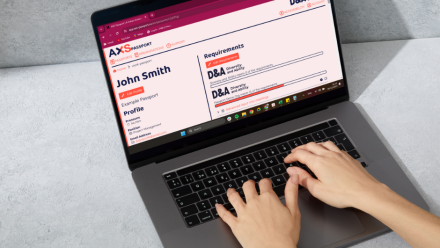The shared and intersecting barriers of trans and disabled communities
21st March 2023 by Ellie Thompson
What does it mean to be ‘disabled’? Recently, Adam Hyland talked about “disabled” as a political identity, that honours the social model of disability by focusing on the barriers we face, rather than suggesting we have an inherent ‘deficit’ or ‘impairment’.
When we recognise the social model of disability, we see that barriers are so much more than just physical obstacles; they’re primarily founded in societal, organisational, disabling attitudes and behaviours. And, under this understanding, we make space for an intersectional approach. In current society, being trans, non-binary, gender-non-conforming or intersex (TNBI) can often be a deeply disabling experience. TNBI people face multiple, intersecting barriers to participating in education, work, and wider society, both because of the direct effect of attitudinal barriers and the more physical consequences of those attitudes.
What are the barriers, and impacts of those barriers, for TNBI people?

Photo by Karollyne Hubert on Unsplash
Psychological trauma
In equity, diversity and inclusion work, the term ‘psychological safety’ is referenced a lot. In a psychologically safe environment, we feel able to share any aspect of our lives that we want to. We know we can bring our ideas, innovations, access needs and identities without fear of judgment, exclusion or risk to our status.
For individuals that experience any form of societal marginalisation, psychologically safe spaces are at best rare, and at worst non-existent. In the workplace, for example, we see the vast majority of employees who experience some form of identity-based discrimination feel the need to mask or downplay their identity. It would be one thing if psychologically threatening spaces were easily identifiable, but this is rarely the case, and so we move through society with the cognitive and emotional burden of constantly questioning our safety.
This experience is the current everyday reality for TNBI people, who experience high levels of microaggressions, abuse, violence and hate crimes (Stonewall Trans Report, 2018).
Physical safety
Psychological and physical safety are inextricably linked. Feelings of stress and psychological threat have physical impacts on our health and wellbeing. But what about when there are also physical threats? TNBI people are living in a constant state of threat to their physical health and even to their lives. They are experiencing constant community loss and grief due to the high rates of direct violent hate crimes, as well as the number of lives lost due to suicide.
The stress caused by psychological and physical threats can have lasting, disabling effects on our physical and mental health.
Lack of intersectional spaces
Existing at the intersection of transness and/or queerness and disability means experiencing multiple forms of discrimination, as well as marginalisation that is uniquely presented due to the intersections of those aspects of our identity. When we hunt for psychologically safe spaces, we may find communities that welcome one aspect of our identity while simultaneously rejecting or excluding others, as we see in the majority of LGBTQ+ spaces where the non-disabled and white experience is dominant. While white, non-disabled queer people may feel able to ‘show up’ in a space and know they are welcomed there, a disabled, Black queer person could lack that same feeling of safety; they might know they won’t be misgendered, but can they know they will have access to an accessible toilet or avoid racial microaggressions?
Exclusionary healthcare provisions
TNBI disabled people often lack access to healthcare that feels safe and appropriate, let alone affirming and welcoming. Disabled trans people have reported innumerable barriers to accessing the healthcare they want and deserve, including inadequate transition-related healthcare, disableism when accessing trans-specific healthcare and transphobia when accessing general healthcare (TransActual Trans Lives Survey, 2021).
TNBI disabled people are forced to face the physical and mental health consequences from healthcare that is delayed, insufficient or invalidating. But, what’s more, the impact of these consequences in turn creates more disabling conditions and experiences, creating a vicious cycle of disablement.
How can we address the barriers?
Diversify the voices you amplify
We often talk about the importance of diversifying your feed. This doesn’t mean looking to disabled, LGBTQ+ and TNBI people to educate you, but it does mean making sure your social media feeds are representative of the rich diversity that is the reality of the world we live in (especially when social media platforms can work to silence the voices and work of marginalised people). Follow creators, activists, and entrepreneurs like Lydia X. Z. Brown (Twitter), Chella Man (Instagram), and Aaron Philip (Instagram) to ensure you include diverse experiences in your digital spaces.
Unlearning assumptions
One of the most challenging dynamics to navigate as a member of a group that is marginalised is the concept of ‘passing’. ‘Passing’ describes the experience of having a marginalised aspect of your identity not being recognised, so you are perceived to have the dominant, non-marginalised identity. The psychological consequences of passing are complex and varied; it can provide a sense of safety, but may also lead to feelings of guilt, shame, invalidation and identity conflict. We see this with disabled people who are not perceived as such; although it may come with a sense of safety in group acceptance, it can also bar us from being able to access essential spaces like disabled toilets or lifts. ‘Passing’ isn’t always linked to our intent, but is a by-product of other people’s assumptions of what a person with a particular identity characteristic ‘should’ look like.
For TNBI people, ‘passing’ as cisgender may bring immediate safety, but the weight of being misgendered or misidentified has real consequences. Alex Bacon, Training and Innovations Project Manager at D&A, shares how this impacts them:
“It’s this constant questioning of what is safe to say and how much advocacy I can do for myself and my community. Even in workshops where I’m talking about the importance of using people’s correct pronouns and adopting non-gendered language, I might not share my own pronouns because I don’t always feel safe doing that. But then, because people ‘read’ me as cisgender, I end up getting misgendered. It may feel small in the moment, in relation to the real-life threats we experience. But misgendering sits with you after you leave an interaction and has a lasting impact on your mental and physical health.”
We can dismantle this barrier by taking on an individual and community responsibility to unlearn the notion that we will know anyone’s identity by first perceiving them. Often, we hear someone speak, or look at them, and assume their gender. Alex highlights this:
“We’re shown that non-binary people look a certain way. They’re white, thin, they’re androgynous, but that’s not me. Cis people often see me, think I look like them, and assume that we have shared experiences and that I am also cis.”
By working to unpack our biases and correct ourselves and others when we make these assumptions, we’re doing crucial work to remove the double burden of passing and not passing. It’s as simple as noticing (and stopping yourself) when you gender strangers and using gender-neutral pronouns for everyone unless they share their pronouns with you.
At Diversity and Ability, an intersectional understanding of disablement is our very foundation. Find out more about how we can support you to embed intersectionality in your approach


